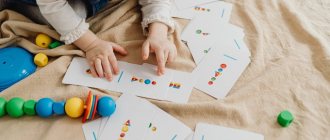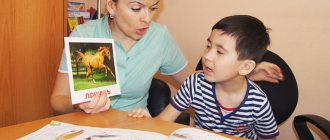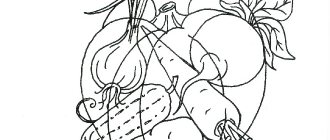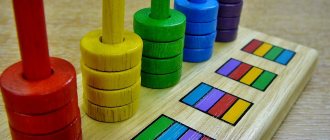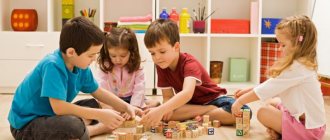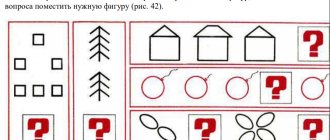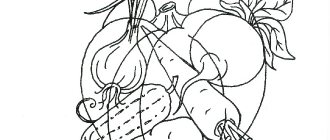Attention, memory and thinking are incredibly important mental processes, and it is better to start developing them at an early age. A good memory helps children quickly absorb knowledge, thinking helps them correctly perceive information and compare facts, attention helps them be selective and be able to concentrate on the most important things.
Development and education of children from 2 to 11 years old in a playful way

Start practicing right now
Start practicing
While developing these processes, many parents, unfortunately, forget about the importance of:
- A complete balanced diet. Diversify your child’s menu by including the necessary vitamins and microelements for proper brain function.
- Sports activities. When a child moves little, his blood is not sufficiently saturated with oxygen, and fatigue appears. This way the baby gets tired faster. If physical activity is contraindicated, just spend more time in the fresh air, taking evening walks with the whole family.
- Have a healthy sleep. Lack of sleep has a bad effect on children's brain activity and memory. Attention becomes distracted, the child becomes uncollected and lethargic.
Remember that first of all you need to create comfortable conditions for children, and only then start learning.
What other points should you consider before starting classes?
- Classes must be regular. Systematic repetition of exercises is the main key to success.
- The duration of the lesson should not exceed 10-15 minutes. Otherwise, such games and exercises will become boring, and the need to repeat them will cause negative emotions.
- Don't force your child to study if he doesn't want to. Turn the lesson into an exciting game, then your baby will always be in a great mood and want to repeat the exercises again and again.
- It is important to gradually increase the difficulty of the training if you want to see progress in children. Slowly add new ones to well-known exercises or complicate your child’s favorite tasks.
There are many different exercises and games to develop children's attention, thinking and memory. We have selected the most interesting and effective ones for you and distributed them by age. Ready to get started?
Games and exercises to develop attention
Exercise “Tangled Lines”
Age: from 3 years
The essence of the exercise is to follow the tangled line from start to finish. You can draw such lines yourself, or you can use ready-made labyrinths. This exercise perfectly develops concentration and perseverance.
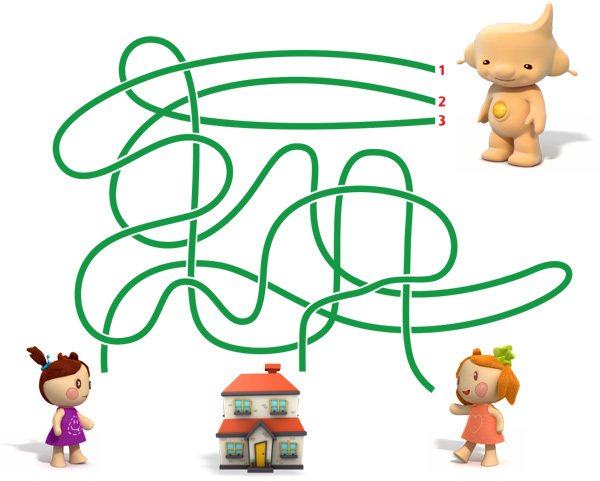
Game "Search"
Age: from 3 years
You show your child pictures of objects, among which you need to find a special one that is different from the rest. It may be a different size, shape or color. Gradually complicate the task: ask to find the desired pattern, which stands out only with a small detail. Step by step increase the number of unique items.
Children of all ages love these games. Practice finding differences in our exercise.
In addition to entertainment, object search tasks develop voluntary attention, increase its concentration and increase its volume.
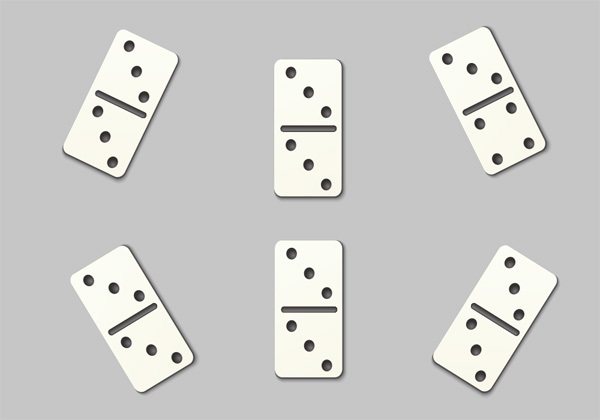
Game "Find the odd one out"
Age: from 4 years
The task is simple - you read a short text to the child, and he claps if he hears inappropriate, “extra” words. For example, three birds were sitting on a branch: a bullfinch, a tit and a monkey. The boy Vitya flew nearby. He heard the birds quack and stopped, their singing sounded so beautiful!
You can come up with your own funny stories or simply replace the words in your child’s favorite fairy tales. The game “Find the odd one out” increases children’s concentration and intelligence, and also improves auditory memory.
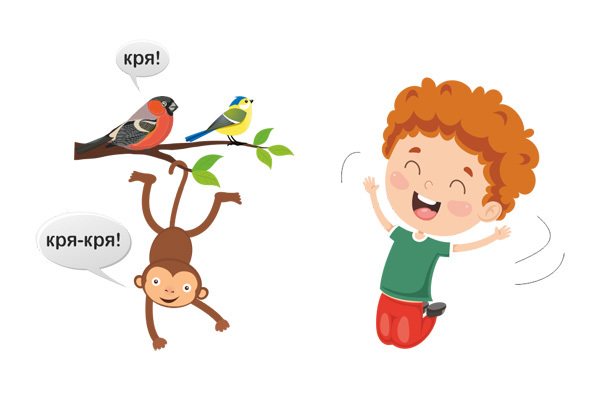
Game "Where are the mistakes?"
Age: from 5 years
Prepare in advance a picture in which mistakes were made. For example, in a picture of a winter landscape, draw a beach umbrella, a fan and a hat. The number of errors depends on age: for five-year-olds, 5-6 are enough. For older children there should be more mistakes.
Systematic searches for errors make attention more stable, increasing its concentration.

Game "Numbers"
Age: from 5 years
The adult shows the child a series of numbers that must be remembered in the same order. For example, 1, 2, 3, 5, then 2, 4, 6, 8, 1 and so on. The older the baby, the longer the row can be, but usually it does not exceed 7-8 digits.
The game expands the attention span and develops auditory memory, and also teaches you to analyze and group objects (numbers).
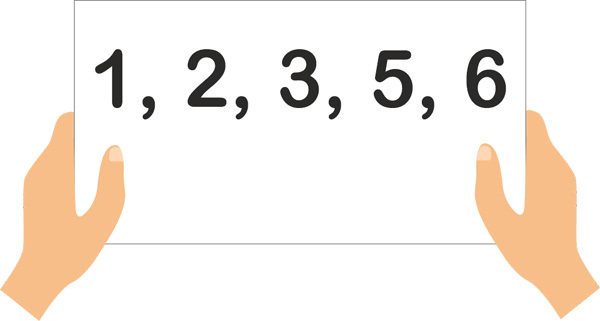
Game "Let's start charging!"
Age: 4-6 years
Let's do some exercises? But not the usual one, but a special “attentive” one! The presenter names the parts of the body and shows them on himself, and the children repeat them. Then the adult begins to confuse the kids, calling one thing and showing another. The child who makes the least mistakes wins.
This fun game develops voluntary attention, auditory memory and motor coordination.
Peculiarities of memory of preschool children
In children of primary preschool age, figurative memory predominates. Babies can remember people's faces, voices, melodies, tastes and smells. They remember information mainly mechanically, involuntarily. That is, a small child remembers what interests him or what makes a strong impression on him. Therefore, an unusual and vivid form of presenting information is very important. With the development of speech, the ability to perceive words increases: a preschooler can memorize poetry, he easily remembers the plots of fairy tales and cartoons. At preschool age, motor memory also actively develops. By repeatedly repeating the same actions (for example, learning a dance or working with scissors), the child gradually remembers them.
In older preschool age, the child begins to form voluntary memory. With the development of the ability to self-control, the baby learns to independently remember information that may be useful to him. However, this requires motivation, that is, the child must understand why he needs to remember something. Voluntary memory develops more actively if you encourage the baby to reproduce accumulated experience: ask the child what happened during the day, ask him to tell fairy tales from pictures, and so on.
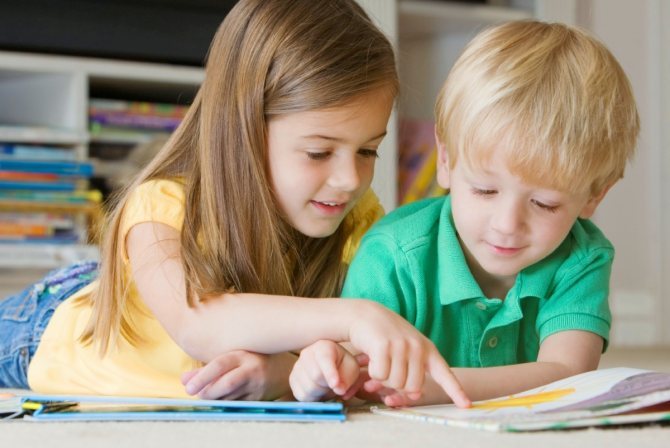
Perform developmental exercises from Ikyusha
Mathematics
Reading
The world
Logics
English language
Anagrams
Age: from 5-6 years
Anagrams are the rearrangement of letters in a word to form a new word. For example, sleep is nose, rakask is paint. Anagrams work well for children who can already read.
Such tasks increase concentration and speed of thinking, and also develop visual memory.
Schulte tables
Age: from 5 years
Many parents have heard about Schulte tables. These exercises are very popular as they increase concentration and develop memory in a light playful way. The child’s task is simple - to find in order the numbers or letters randomly located in the table. The sizes of the table vary depending on the age and preparation of the baby (usually from 3x3 to 16x16).
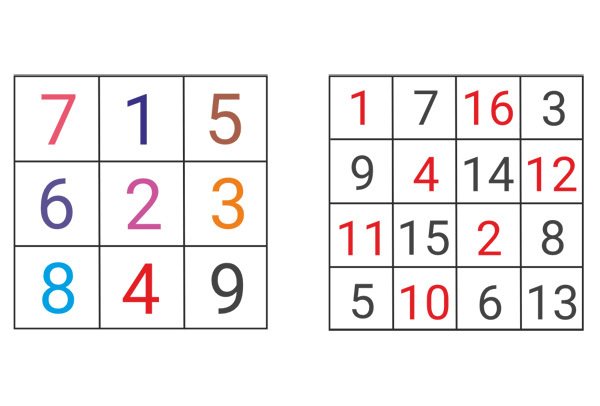
Exercise “Listen and count”
Age: 6-8 years
Another great exercise for focusing attention. You read the sentence while tapping your pencil or pen on the table. The child needs to remember both the text and the number of your strokes. If the baby begins to cope easily, complicate the task by gradually increasing the number of blows.
Auditory Memory Training
Despite the fact that the famous Russian proverb states that “it is better to see once than to hear 100 times,” auditory memory can sometimes be no less useful. Thus, without auditory memory it is difficult for musicians, actors, politicians and even intelligence officers to achieve success. To understand how important auditory memory is, remember that listening to a lecture is remembered better than just reading a textbook or viewing slides.
The peculiarity of auditory memory is that, unlike visual impressions, which are perceived more quickly, memory often retains well-remembered auditory impressions better. Below are some techniques and methods that will help you learn how to effectively remember auditory information.
Exercise 1: Reading aloud
Reading aloud is undoubtedly one of the most effective exercises for developing auditory memory. It is reading aloud that helps to increase working vocabulary, improve diction, intonation, emotional coloring and brightness of speech. Reading aloud helps us better remember the auditory components of the material we read.
You need to read aloud slowly, at an optimal conversational pace, observing some technical nuances:
- pronounce words clearly, expressively and with placement;
- pronounce the text not monotonously, but as if you were expressing your own thoughts (telling).
If you read aloud for at least 10-15 minutes every day, then within a month you will notice obvious results in both your speaking abilities and your auditory memory.
Exercise 2. Poems
Memory training does not have to be limited to any specific exercises. Make it a habit to memorize a short poem every day, or at least every week. Try to delve deeply into its meaning, think about the techniques that the poet used.
When learning a poem, you will repeat it either out loud or silently, using your articulation apparatus. The more repetitions you do, the better your memory will remember the poem. Over time, you will train your memory and begin to memorize verses as a result of much less repetition.
In addition, the poems themselves are often used for long-term memorization of any abstract information. You can see the applied use of the method in some materials on our website, which describe the principles of memorizing information such as:
- Numbers after the decimal point in Pi;
- Multiplication table.
Exercise 3. Eavesdropping
When walking down the street or while on public transport, try to hear and retain in your memory a fragment of a conversation between strangers. Then try to reproduce to yourself what you heard with the right intonation, and also mentally imagine the faces of the people who said it. This exercise allows you to learn to comprehend text fluently by ear, and will also allow you to be more attentive and sensitive to the tone of speech.
Statistics Full screen
Games and exercises for memory development
Memory Game
Age: from 3 years
This is one of the most famous and favorite memory development games for children. Otherwise it is called “Find a Pair”. The game is a set of paired pictures with the same designs: for the little ones it is usually 12 cards (6 pairs), for older children the number increases. The idea is simple - find identical pairs from the total number of cards lying face down. If the cards match, the player takes them, if not, returns them back.
There are a lot of both paper memories and online games. Ikyusha also loves such exercises, try to find the pairs faster than him?
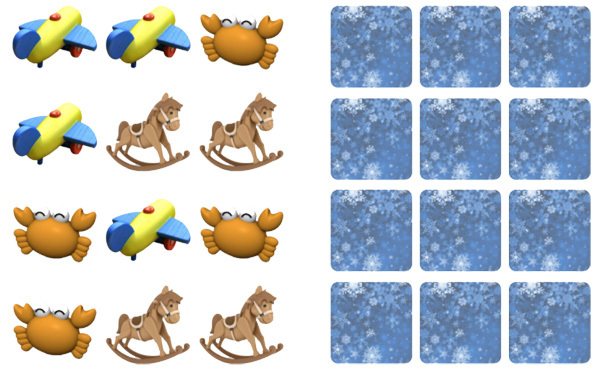
Game "What's gone?"
Age: from 3 years
An excellent game for developing visual memory and increasing attention span, which does not require additional materials.
Place 4-5 toys or small objects in front of your child for a minute and ask him to turn away. Then remove one item and ask what is missing? The kid must name what is missing. If the game is boring, diversify it by adding a new item.
The task must be gradually made more difficult, increasing both the total number of toys and those that we add or remove. Focus on the child’s age: for example, by the age of 6-7 years, a child can easily remember up to 10 objects.

Choose a pattern
Exercise “Fold the pattern”
Age: from 4 years
Make a pattern or lay out a drawing from simple geometric shapes (can be cut out of cardboard) or construction set parts and ask your child to remember it. Then the child needs to turn away for a while, and during this time you change the location of one figure or part. The baby’s task is to find changes and restore the pattern.
At first you can start with 3-4 parts, gradually increasing their number. If the child can do it easily, remove several parts or all at once, asking him to reassemble the pattern.
This exercise develops memory and imagination, increases the volume and concentration of attention.
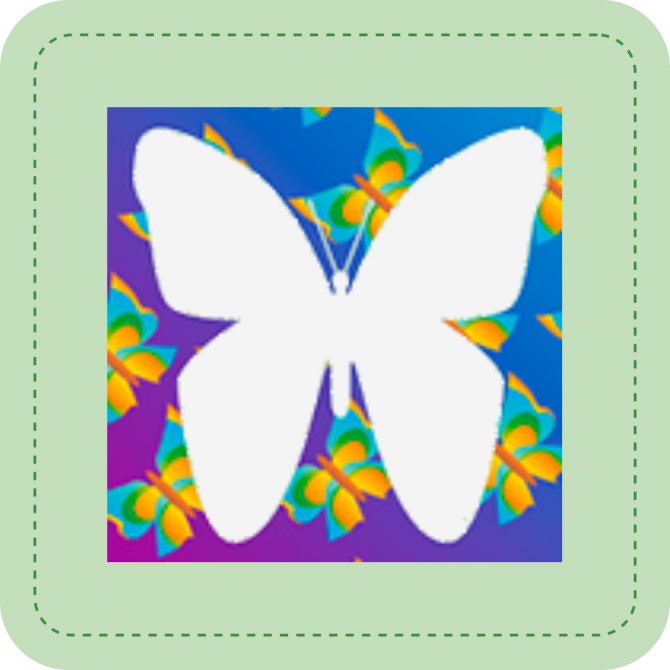
Choose a pattern
Game “Remarkables”
Age: from 5 years.
Ask your child to close his eyes and list everything he saw in the room, indoors, outside. The more small details he remembers, the better! Ask your child leading questions if it is still difficult for him to answer. For example, how many children play in the sandbox? Did the cashier at the store have long or short hair? How many cups were there on the table?
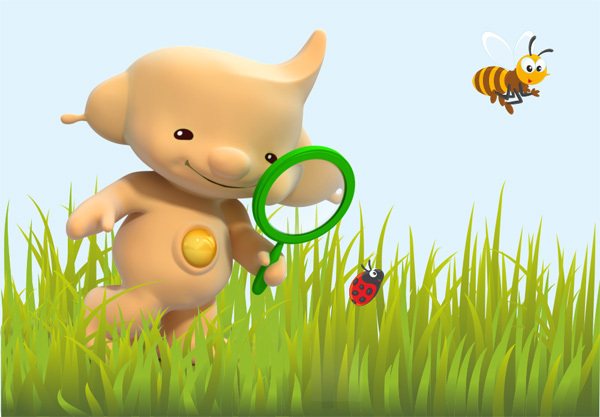
Game "Locomotive"
Age: 4-7 years
This is a very fun and entertaining game for a small group of children. The idea is simple - the first child names any object, the next player repeats the word and names his own. The third child repeats what the first two said and adds himself, and so on.
“Locomotive” helps to increase memory capacity, develop auditory perception and voluntary attention. You can also consolidate the material in this way, for example, by naming only fruits, vegetables, trees, flowers.
Testing visual memory
To test, we will need 10 cards with images of some objects, animals, people. The main thing is that all this is well known and understandable to the child. For example, pictures could look like this.
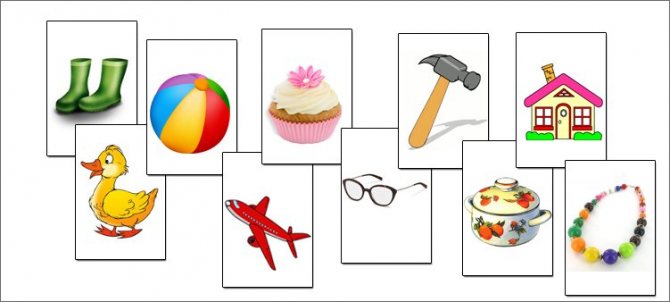
Check progress step by step:
- Lay out the cards on the table.
- Invite your child to look at them carefully.
- After 30 seconds, remove the cards.
- Ask your child to remember what was drawn in the pictures.
Let's move on to evaluating the results. If you managed to remember less than 5 pictures, then visual memory needs your attention and additional development. But even if the child showed a very good result, remembered 6, 7, or even all 10 pictures, then the exercises below will not hurt. Because there is no limit to perfection! Is not it?
"Photo report"

Prepare a picture in advance, for example this one.
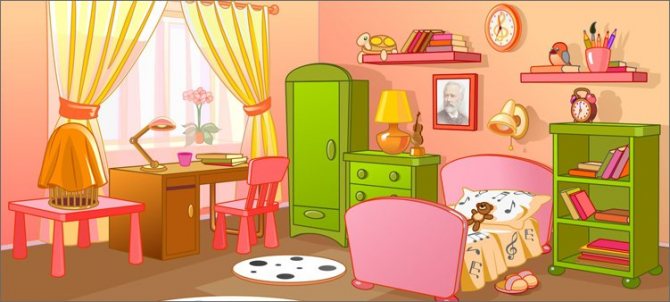
Action plan:
- Show your child a picture and invite him to “take a photo” of it with his inner “camera.”
- After 30 seconds, remove the picture.
- Ask your child to answer the questions.
Questions for our sample could be the following:
- How many shelves are hanging on the wall?
- What is written on the bed linen?
- Who's lying on the bed?
- What color is the wardrobe and bedside tables?
- What's on the windowsill?
- What time is on the clock?
- Where does the turtle sit?
- How many lamps are there in the room?
- What color are the curtains?
- Is there a violin in the room?
There are a lot of similar exercises in children's magazines.
Patterns of development of thinking in preschool age
In general, the thinking of preschoolers goes through three basic stages in its development:
- Visual-effective thinking allows you to solve problems that arise for a child by manipulating objects around him.
- Visual-figurative thinking begins to develop in the preschool period. It already allows the child to solve some problems in his mind with the help of images existing in his memory.
- Verbal-logical thinking allows the child to think using not the objects themselves, but their verbal designations. This type of thinking appears already in older preschool age.
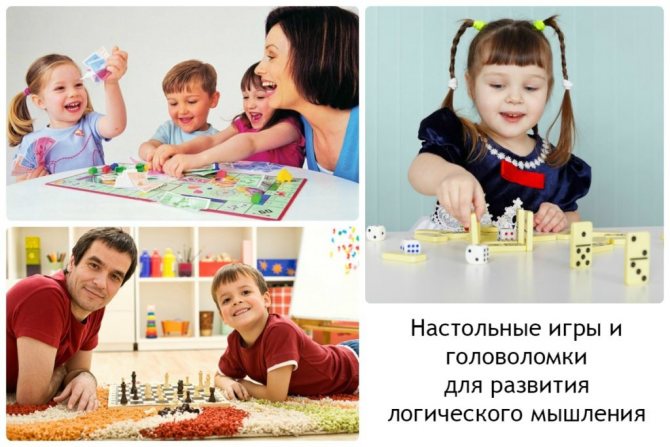
Logic is one of the highest stages of thinking development.
Benefit
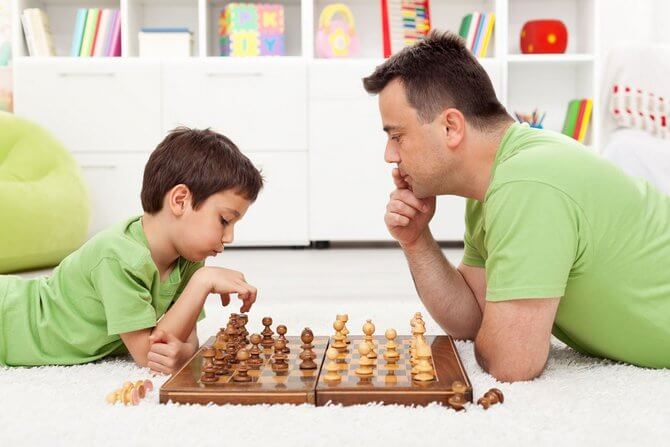
Games that develop memory are the most popular. This is the leading activity for children, so their enthusiasm is not surprising. But why are they preferred by older and older people? They just have undeniable advantages over the same finger and speech gymnastics, daily exercises, logical puzzles and even mnemonic techniques:
- this is an interesting and exciting process that makes you take your mind off problems;
- it relieves fatigue and tension, combining relaxation and benefits at the same time;
- their rules are usually simple and can be learned by everyone - children, old people, people with disabilities;
- competitive spirit is a good motivation to do everything perfectly and achieve the desired result;
- Team games always mean communication, the ability to find contacts with other people, which also has a positive effect on the development of brain activity, and therefore memory too.
How exactly does play help develop memory?
Rules control the behavior of participants, not allowing them to go beyond what is permitted - they must be constantly kept in mind while simultaneously performing other actions.
Overcoming obstacles and the ability to control your negative emotions in the event of failure or loss contribute to the development of those same neural connections. They force one to draw conclusions about mistakes made - a person remembers them so as not to make them next time.
The game requires you to look for ways to solve a given problem, either as a team or independently. Sometimes conditions change rapidly and unexpectedly, to which you need to adapt just as quickly. The result is the development of creativity, initiative, intelligence, and with them attention, thinking and memory.
Most games require maximum concentration, so they can be used to develop memory and attention at the same time.
The result of regular use of gaming activities as a simulator for memory development is an improvement in mental abilities and cognitive mental processes. This will manifest itself in literally all areas: in everyday life, when you don’t have to once again stand in the store and remember what you should have bought; in studies, when the material will be easily remembered; at work, where you always need to be prompt; in relationships, so as not to forget the wedding anniversary or birthday of a loved one.
